With exhibition play starting in Florida and Arizona, our senses are alert for the familiar sounds and sights of our favorite game. The games themselves don't count for anything, of course, and for the most part, they will hold little information about what will actually happen over the course of the 2017 major league season. Yet there are dramas. Little ones, but dramas nonetheless.
When it comes to positional battles, we generally think they will be decided by a simple judgment of which player is better. There are other considerations: Is the team focused on the near term or the long term? Who has options remaining? Who has service time that needs to be preserved? Are there weaknesses on the roster that a certain player can address better than others?
It's the last point that we're interested in today. When we roll up all of our preseason player projections to the team level, we can get a sense of each club's strengths and weaknesses. Once we identify an area that poses a potential problem for a club, are there possible solutions in camp for teams, at least among roster spots that are up for grabs? If so, then we've got some of those little dramas to follow as the games begin.

ARIZONA DIAMONDBACKS
Problem projection: WOBA by left-handed batters (22nd)
Arizona has a lot of holes in its profile, especially in the middle infield where it ranks 26th in projected weighted on-base average at second base and 24th at shortstop.
The fix: The Diamondbacks will be shuffling through their middle-infield options and to balance the lineup, it would be good news if Ketel Marte seized at least the right-handed portion of a shortstop platoon. A switch-hitter, Marte hit .279 against righties last season for Seattle.

ATLANTA BRAVES
Problem projection: WOBA at third base (30th)
With everyone excited for a full season of Dansby Swanson at shortstop, the Braves are looking for an answer to play next to him on the left side of the infield. In addition to the poor offensive projection, Atlanta also has a poor overall defensive forecast (28th in defensive runs saved), making the hot corner ripe with opportunity for the right breakout player.
The fix: Incumbent Adonis Garcia is playable but, at 32, isn't really a breakout candidate. However, Rio Ruiz, at 22, carries with him the possibility of youth. The Braves have enough veteran infielders in camp that Ruiz could end up starting the season in Triple-A. It would be an exciting development for Atlanta if he forced his way onto the roster.

BALTIMORE ORIOLES
Problem projection: Stolen bases (30th)
Stealing bases is just not what the Orioles do under Buck Showalter. This year's roster won't change that and the concern isn't really steals but more general baserunning acumen.
The fix: Veteran Michael Bourn recently signed a minor league deal to return to the Orioles. Last season, at 34, Bourn stole 15 bases in 113 games, so the wheels still work. He would add another dimension to the Baltimore outfield mix. However, assuming he makes the roster, Bourn would bump a Rule 5 pick -- Anthony Santander or Aneury Tavarez -- whom the O's like, or Joey Rickard. Baltimore can't realistically keep both Rule 5 guys, but even if they keep only one, there will be tough decisions to make.
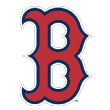
BOSTON RED SOX
Problem projection: Home run percentage (21st)
Believe or not, as good as the Red Sox look on paper, this is not a team with elite long-ball potential, especially now that David Ortiz is chillin' on the beach. According to both the projections from both Baseball Prospectus and Fangraphs, the only Boston hitters likely to hit even 20 homers are Hanley Ramirez and Mookie Betts. Don't misunderstand: Boston projects to score the most runs in the majors, so dismiss this problem if you wish. On a team with few glaring statistical holes, a few more dingers could be the final piece of the puzzle.
The fix: Any one of the Red Sox's young stars could break out in the power department, and that's the most obvious patch here. The third base battle will be the one to watch. If slimmed-down veteran Pablo Sandoval can claim an everyday role, his long-ball potential is better than that of Brock Holt or Josh Rutledge.

CHICAGO CUBS
Problem projection: Left-handed relief FIP (16th)
Talk about your first-world problems. The Cubs simply don't have any glaring weaknesses. Even this one is overstated because righty power reliever Carl Edwards is so good against lefty hitters.
The fix: The Cubs signed Brian Duensing for what probably will be a specialized role. Duensing has allowed a .614 OPS in his career against lefties. Last year, he was at .619, but was limited to 13⅓ innings because of elbow problems. Chicago will hope a healthy Duensing still has his lefty-killing ways. If not, the Cubs will have to look elsewhere.
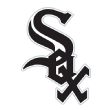
CHICAGO WHITE SOX
Problem projection: Wins (27th)
Not trying to be cute here. The White Sox have problem areas up and down the roster and where there is projected competence, it's attached to a veteran who is not going to be around by the time Chicago returns to competitiveness. Not only have the Sox just embarked on their rebuilding plan, but they also remain in the middle of the tear-down part of the process.
The fix: Patience.

CINCINNATI REDS
Problem projection: Starting pitcher FIP (29th)
After setting a record for homers allowed in 2016, it's no secret that the Reds have a ways to go in revving up their run-prevention machinery.
The fix: There are no shortcuts here, of course. Homer Bailey is on the shelf again. Stopgap veteran Scott Feldman is slated for a rotation spot. Young Robert Stephenson looks like good bet for a slot, which offers hope. But Cincinnati needs a critical mass of young arms, so in addition to Stephenson, eyes will also be on prospects Amir Garrett and Cody Reed. They won't all break camp with the club, but hopefully they show themselves ready to land in Cincy sooner than later.

CLEVELAND INDIANS
Problem projection: Catcher WOBA (25th)
Like the Cubs, Cleveland has few holes on its resume. The catching situation is far from dire defensively. However, the Indians do look a little light in catcher offense.
The fix: The Indians will go with a combination of Yan Gomes and Roberto Perez behind the plate. Of the two, Gomes has the better upside, having hit 21 homers just a couple of years ago. Perez has the better approach, and Gomes' production has dwindled because of injury. It's an intriguing duel, though we know both players will get plenty of time behind the dish.

COLORADO ROCKIES
Problem projection: Walk rate (27th)
The Rockies profiled as an aggressive offensive team with decent contact rate and plenty of pop. There aren't a lot of walks in the mix, however.
The fix: The Rockies' set of position players is both strong and more or less fixed as we begin spring play. There aren't any magic bullet guys hanging around likely to spread the gospel of plate discipline. It might not matter, as this club looks as if it can mash. If the Rockies beat their forecast for walks, it'll be because ascending players like Nolan Arenado, Trevor Story and David Dahl evolve in that direction.

DETROIT TIGERS
Problem projection: Center field WOBA (25th)
This appears to be a last-hurrah kind of season for this version of the Tigers, who have pledged to slash payroll. Until then, there's a big hole in center field.
The fix: None of the three leading contenders in camp -- Mikie Mahtook, JaCoby Jones and Tyler Collins -- projects to post an on-base percentage of over .300. The acquisition of a stopgap veteran with one year left on his deal makes sense, unless one of this unproven trio breaks out, that is.

HOUSTON ASTROS
Problem projection: Left field WOBA (23rd)
There are only a few finishing touches needed for the Astros here and there, the big one being the need for a second front-line starter. However, on a positional group that is both deep and well-balanced, there does appear to be a need for one more quality corner bat.
The fix: It might simply be a matter of semantics here, as we don't know how much Carlos Beltran will ultimately play the field. If the answer is not very much, then Houston will need a partner for left fielder Nori Aoki, who struggles against lefties, to emerge. That puts a lowly-amped spotlight on Jake Marisnick and and Teoscar Hernandez this spring.

KANSAS CITY ROYALS
Problem projection: Second base WOBA (29th)
In addition to the poor offensive forecast generated by the various second base options the Royals have in camp, this is also a roster that looks quite a bit stronger from the left side of the plate than the right. As such, to kill two birds, so to speak, K.C. could use an impact righty hitter to seize the keystone over the next few weeks.
The fix: There are two possibilities. The more exciting one would be for young switch-hitter Raul Mondesi to make an offensive leap. The other would be for last year's solid fill-in for Mike Moustakas at third base, Cheslor Cuthbert, to show enough with the glove to hold down second base. If neither scenario pans out, the Royals might be left with a solution with less upside, in the form of either Whit Merrifield or Christian Colon.
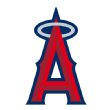
LOS ANGELES ANGELS
Problem projection: Second base WOBA (30th)
The Angels acquired Danny Espinosa from Washington during the offseason to plug the hole at second base. The problem is that the projection systems think he's only going to make it worse.
The fix: Obviously, the Angels need Espinosa to justify their faith in him. For that, Espinosa needs to be more than an all-or-nothing hitter. If he can make more consistent contact and get his average even up to the .240s, his power bat and defense will help L.A. Can Espinosa adapt?
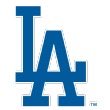
LOS ANGELES DODGERS
Problem projection: Stolen bases (27th)
The Dodgers are pretty loaded, and as with the Orioles the paucity of steals on the roster isn't a huge problem. L.A. doesn't look like a super-athletic team overall, though, and given the depth of talent in camp, surely Dave Roberts could pinpoint someone who can steal a bag when needed.
The fix: Andrew Toles is a threat and will be on the roster from Opening Day this time. Beyond that ... it's just not the way the Dodgers are constructed. If Austin Barnes gets appreciable time in the majors this season, he can swipe a few bases. Really though, the Dodgers will probably just have to settle for being good at everything else.

MIAMI MARLINS
Problem projection: Home run percentage (26th)
Even with one of the premier long-ball threats in Giancarlo Stanton, the Marlins are a team more built around contact and average than homers. That makes sense, given the realities of Marlins Park. With so-so offensive projections on the infield corners, is there a hidden power bat looming who could help?
The fix: Alas, probably there isn't one. Miami's best hope for a few more easy runs is for dynamic young outfield of Stanton, Christian Yelich and Marcell Ozuna to continue to develop and stay healthy. If Justin Bour takes to his full-time gig at first base and has some success against lefties, that would also help.
 MILWAUKEE BREWERS
MILWAUKEE BREWERS
Problem projection: Strikeout rate (30th)
The young Brewers are weak in a lot of areas. The offense has some pop (eighth in home run percentage) but with a forecasted strikeout rate of 24 percent it remains to be seen if they can make enough contact for it to matter. On the spreadsheet, it sure doesn't look like it.
The fix: Milwaukee is going young at most positions, so what you're really looking for is progress. If some or all of Jonathan Villar, Domingo Santana, Orlando Arcia, Travis Shaw and Keon Broxton can move their averages into the .250s and .260s, that will be evidence of improved approaches.

MINNESOTA TWINS
Problem projection: Pitchers' strikeout percentage (30th)
This has long been a problem for the Twins. When there are so many strikeouts to be had across baseball, it's swimming upstream to lag so far behind. That's especially true when Minnesota seems to be developing a set of powerful position players who collectively might be below average on defense.
The fix: It will take awhile for the new baseball operations team in Minnesota to implement their schemes. In the meantime, hope for Jose Berrios to find his command and put last season's unsightly numbers behind him. He has strikeout stuff.

NEW YORK METS
Problem projection: Defensive runs saved (29th)
If healthy, the Mets' pitching staff will be at or near the top of the big league leaderboard in K's. Based on forecasts using Baseball Info Solutions' DRS data, their position players are going to have to rake collectively to make up for shoddy glove work.
The fix: This isn't a new problem as New York finished 26th in defensive efficiency last year. According to the 2017 Bill James Handbook, New York was minus-21 in DRS at third base alone. The solution is near and yet so far: two-time Gold Glover David Wright is somewhere near good health.

NEW YORK YANKEES
Problem projection: Third base WOBA (25th)
Chase Headley is a solid defensive third baseman and is adequate with the bat. He also is 33 and hit only three road homers last season. He never has been a great on-base guy, so as he ages his shortcomings at the plate stand out all the more.
The fix: Again, it's patience. Headley is fine as a stopgap who should remain above replacement. Someday pretty soon, Gleyber Torres will arrive and maybe around that time the Yankees will spend a gazillion dollars on somebody like Manny Machado. For now, just watch to see if Headley shows signs of serious decline.

OAKLAND ATHLETICS
Problem projection: Defensive runs saved (30th)
The A's don't just finish last in the DRS forecast -- they are last by a lot. Unfortunately, even if they had a stash of gloves in spring camp, they don't have enough offense to be able to afford many defense-for-offense tradeoffs. Still, given the potential for a solid, but young, starting rotation, you'd like to see those guys get all the help they can.
The fix: On some teams, a flashy shortstop can paper over a lot of defensive shortcomings. In Oakland, Marcus Semien doesn't have the metrics to carry that weight, though he is a plus bat for the position. However, new third baseman Trevor Plouffe has to be better than what Oakland got last season from Danny Valencia & Co. The same faint praise could also be summoned for new Oakland center fielder Rajai Davis, who is far from a Gold Glover himself but should help improve upon last season's collective minus-17 DRS in center.

PHILADELPHIA PHILLIES
Problem projection: Runs (28th)
In most cases, we're trying to stay away from the wide-lens metrics (like runs) but really that's the story of this year's Phillies. They are probably still a transitional team, but the run prevention has enough potential that if the offense surprises, then maybe the Phillies emerge as a sleeper team.
The fix: The Phillies project to finish in the bottom half in WOBA at all eight non-pitching positions. In other words, there's no magic bullet. One of the sorest of the sore spots is shortstop (26th in WOBA), and that's where prospect J.P. Crawford could create some excitement.

PITTSBURGH PIRATES
Problem projection: Defensive runs saved (27th)
The Pirates are a sleeper contender with impact young guys sprouting around Andrew McCutchen. The poor defensive metrics might be more of a hangover from last season than anything, especially for McCutchen, who was moved out of center field just before spring training.
The fix: The grand vision is for Starling Marte to become an elite center fielder while the position switch reinvigorates McCutchen's overall game. The other upgrade could come at shortstop if prospect Kevin Newman can impress Clint Hurdle enough that he supplants Jordy Mercer at some point this season. Newman would be an upgrade at the plate, but if he ends up taking over for the steady Mercer, it will be because his defense has made the move palatable.

SAN DIEGO PADRES
Problem projection: Starting pitcher FIP (25th)
The Padres project to be in the bottom three offensively at four different positions, but we're going to focus on the starting pitching anyway.
The fix: It's a time for innovation in San Diego. In an interview with the San Diego Union Tribune that was in turn spurred by an article at Baseball Prospectus, manager Andy Green seemed open to some serious tinkering with his starting pitching paradigm. Was he serious? Hope so, because that might be the one thing that could get a lot of non-San Diego fans to tune in.

SAN FRANCISCO GIANTS
Problem projection: Third base WOBA (27th)
The Giants enter the season with last year's post-Matt Duffy combo of Eduardo Nunez and Conor Gillaspie back to man the hot corner. Not only is their offensive projection poor, but their DRS projection is below average as well. Nunez is slated to be the primary guy and though he turns 30 in June, he's a guy whose 16 homers last season nearly doubled his career total.
The fix: How about plugging in a guy who hit .330 last season with 26 homers and 24 steals ... in Korea? We don't know what Jae-gyun Hwang, 29, can do yet, but we'll be watching because there is a prime opportunity for him in San Francisco.

SEATTLE MARINERS
Problem projection: First base WOBA (30th)
We've covered this a few times already, but with the Mariners going heavy on outfield defense, it's paramount for Seattle to get offense from first base. Obviously, the forecasts don't see that happening.
The fix: We know the names: former Cub Dan Vogelbach, who came over in July in the Mike Montgomery trade, and veteran Danny Valencia, who will start against lefties. Or at least that's the plan. Valencia is more of a sure bet -- he has put up an OPS at or near .800 in three of the past four seasons. Vogelbach's professional success has come exclusively in the minors. He went 1-for-12 in his first big league action last season. In Triple-A, however, he hit .292/.417/.505. That's what the Mariners need.

ST. LOUIS CARDINALS
Problem projection: Right-handed WOBA (16th)
The Cardinals look solid across the board, especially if Dexter Fowler boosts the outfield defense as planned. The rotation is solid, even after the frustrating injury to Alex Reyes, and the bullpen is deep.
The offensive projection is far from tragic but given the crowded wild-card derby in the NL, and the presumed dominance of the Cubs in the Central, a mediocre offense might not be enough to get the Redbirds into the postseason.
The fix: St. Louis doesn't have any massive holes in the lineup, so what you're looking for are the guys with the most breakout potential.
It's probably not realistic to ask more out of Aledmys Diaz than what he did last season, so it'll be up to the three youngest Cardinals that figure to get regular playing time: Kolten Wong, Stephen Piscotty and Randal Grichuk.

TAMPA BAY RAYS
Problem projection: On-base percentage (29th)
The Rays hope to jump back into the playoff race on the heels of elite run prevention. So the position players tend to be more proficient with their gloves than their bats. There is a decent amount of power in the group, but with the worst forecasted batting average in baseball and a walks projection that ranks 25th, Tampa Bay needs some of these glove men to get on base.
The fix: Prospect Mallex Smith was traded twice last month, going from Atlanta to Seattle and then to the Rays in the Drew Smyly trade. Smith has a career .382 on-base percentage at the minor league level and stole as many as 88 bases in a season. He got into 72 games for the Braves last season, and while his .316 OBP doesn't make your heart race, it is better than the Rays' current forecast. He's not going to supplant Kevin Kiermaier in center field, but it would be great to see Smith force his way into regular playing time against righties.
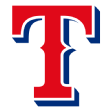
TEXAS RANGERS
Problem projection: Starting pitcher FIP (21st)
The Rangers hope to prop up their rotation once again with sterling back-of-the-bullpen work. The top of the rotation -- Yu Darvish and Cole Hamels -- is terrific. After that, the Rangers have a lot of candidates to fill out the rotation but little certainty. Martin Perez is solid but lacks the strikeout rate to be a true impact No. 3 guy.
The fix: Who knows? There are possibilities in Tyson Ross, once he gets back from injury, Andrew Cashner and A.J. Griffin. Still, if feels as if the Rangers will still be searching for that No. 3 starter throughout the early part of the season.

TORONTO BLUE JAYS
Problem projection: Left-handed plate appearances (30th)
The Blue Jays have a few switch-hitting options, but Kendrys Morales, Justin Smoak and Jarrod Saltalamacchia weren't very good against righties last season. Meanwhile, only 7 percent of the Jays' plate appearances figure to come from lefty hitters, by far the lowest figure in the league according to our current depth chart. Those lefty hitters as a group project to post the lowest WOBA of any team in the majors.
The fix: Maybe Ezequiel Carrera overachieves. Maybe Dalton Pompey, another switch-hitter, breaks through. He's hasn't shown much of a platoon split in the minors. Or maybe the Jays find they need another lefty bat.
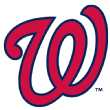
WASHINGTON NATIONALS
Problem projection: First-base WOBA (24th)
Like the Dodgers, Giants, Mets, Cardinals and others, the Nats are hoping to smooth out any rough edges because the Cubs-led competition in the National League looks fierce. After franchise stalwart Ryan Zimmerman hit .218/.272/.370 a year ago, you have to worry that his career is in a spiral.
The fix: Through a myriad injuries, Zimmerman's numbers have been in steady decline for a half decade, and the move across the diamond to first base hasn't helped. The hope is that last season was rock bottom and Zimmerman can finally find some injury luck. You hope so because if the Nationals finally breakthrough in the postseason, it'd be painful if Zimmerman were not a part of it. Let's root for some spring renewal.
